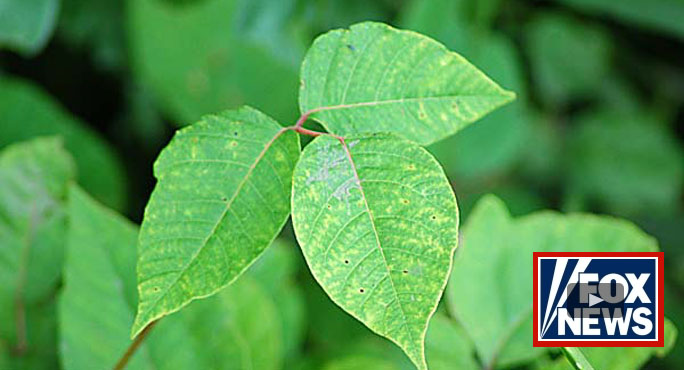Click image above to watch “Natural Remedies for Treating Poison Ivy, Oak and Sumac” on FOX News
Green is good, right? Yes, for the most part. But beware of poison ivy, oak and sumac – three green plants that will make you itch like crazy. These plants all cause contact dermatitis, producing redness and rash. The ingredient in these plants that causes such discomfort is called urushiol. This nasty compound is so toxic, an amount required to sit on the head of a pin will cause a rash in 500 people.
Sensitivity to urushiol-containing plants is the most common allergic skin reaction in the U.S. Over half of the population gets affected by poison ivy and its botanical cousins. And poison ivy, oak and sumac aren’t the only plants that contain urushiol. This compound also occurs on mango, cashew nut trees, India’s “ink nut,” the Malaysian rengas tree, and ginkgo trees. I have contracted terrible urushiol-related rash in the rainforest of Ghana, Africa, in Mexico, and in India – all as a result of contact with plants.
If you make contact with any of these plants, the best thing to do is wash thoroughly before reaction occurs. The company Tecnu makes a wonderful line of products specifically for poison ivy and its cousins, and washing with Tecnu soap can prevent a blooming rash. But if you miss out on catching allergy early, there are remedies you can use to help relieve the terrible itching and redness that occur.
1. Baking Soda Paste
Found in most kitchens, common baking soda is a great natural remedy for the itchiness associated with a poison ivy rash. To help relieve itching, place 1/2 a cup of baking soda in a bath tub filled with warm water. You can also mix three teaspoons of baking soda with one teaspoon of water and mix until it forms a paste. Apply this paste to the infected area to relieve itching and irritation that’s associated with a poison ivy rash.
2. Organic Witch Hazel
Made from the bark of the witch hazel tree, this astringent splash relieves the itch of poison ivy and tightens skin. Wherever you have a rash, apply witch hazel. The cooling, soothing extract will not get rid of the rash, but it will calm it down.
3. Aloe Vera
The slippery inner part of the succulent aloe vera will help to relieve itching skin and will also speed recovery from poison ivy. Though not a cure, aloe vera helps. Compounds in aloe help to accelerate wound healing.
4. Tea Tree Oil
Derived from the Australian tea tree, this oil soothes the itch of poison ivy. Tea tree oil is anti-inflammatory, and a rash is an inflammation. So applying tea tree oil helps to reduce redness and swelling.
5. Fresh Ocean Water
I discovered this method one summer and want to pass it on. This is an outright cure. If you are near the ocean anywhere, get into the water, lightly break the poison ivy blisters with sand and let the ocean water get at it. This dries up poison ivy faster than any other treatment I know. This can get rid of poison ivy in just a day or two.
Learn to recognize poison ivy, oak and sumac. Even when they are dry, these plants leave litter that remains highly toxic. Never burn these plants in a fire. Inhaling the smoke from such a fire can kill you, and the smoke can cover your body with urushiol. Remember, for the most part, green is good. But beware of the urushiol-containing plants. Tamanu Oil, Dragon's Blood, and Chamomile Extract are also excellent for soothing and healing skin.


